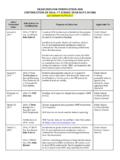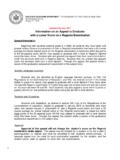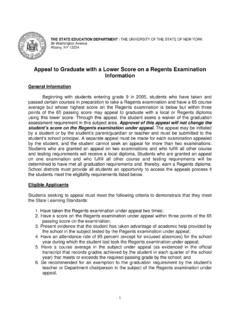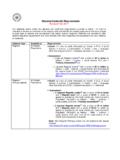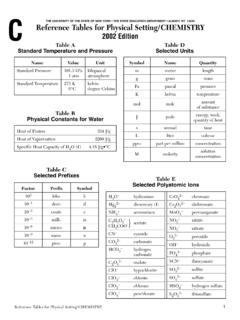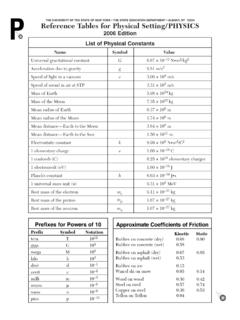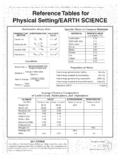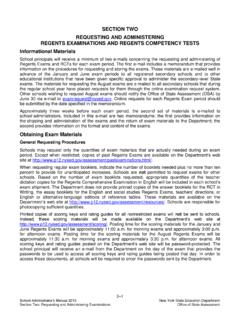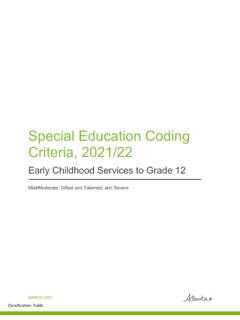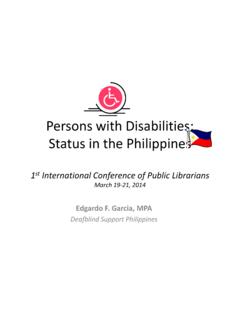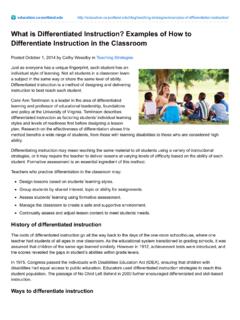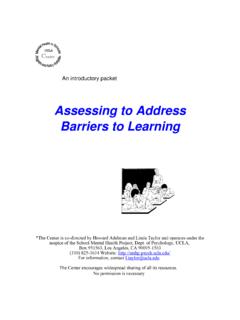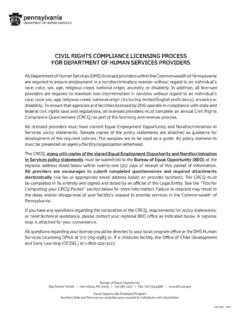Transcription of IDENTIFICATION OF STUDENTS WITH LEARNING …
1 IDENTIFICATION OF STUDENTS with LEARNING DISABILITIESWITHIN A MULTI-TIERED SYSTEM OF SUPPORT (MTSS)**Multi-Tiered System of Supports (MTSS), according to the Center on Response to Intervention at the American Institutes for Research (2013) is a prevention framework that organizes building-level resources to address each individual student s academic and/or behavioral needs within intervention tiers that vary in intensity. MTSS allows for the early IDENTIFICATION of LEARNING and behavioral challenges and timely intervention for STUDENTS who are at risk for poor LEARNING outcomes. The increasingly intense tiers ( , Tier 1, Tier 2, Tier 3) represent a continuum of supports.*Multi-Tiered System of Supports (MTSS), according to the Center on Response to Intervention at the American Institutes for Research (2013) is a prevention framework that organizes building-level resources to address each individual student s academic and/or behavioral needs within intervention tiers that vary in intensity.
2 MTSS allows for the early IDENTIFICATION of LEARNING and behavioral challenges and timely intervention for STUDENTS who are at risk for poor LEARNING outcomes. The increasingly intense tiers ( , Tier 1, Tier 2, Tier 3) represent a continuum of Response to Intervention (RtI) Framework consistent wit h section (ii) of State regulati on sSchools must communicate with parents (in writing) when a student requ ires instruction beyond what is provided to all STUDENTS ( , Tier 2 or 3 interventions). This written communication must include: The amount and nature of data to b e collected along with general ed ucation services that will b e provid ed ; Strategies for increasing LEARNING ; and The parents right to request an evaluation for special education programs and servicesWritt en referral or request for referral for special education evaluation consistent with section of State regulati onsMTSS is providing appropriate sup portDistrict obtains parental consent for indi vidual eval uation for eligibi lity determinationDistrict completes evaluation within 60 days of receipt of consent to eva luate (or referral for rev iew of a stu dent with a disab ility)Eligibility under category of LEARNING disability must be determin ed in accordance with section (j) of State regulati onsPa rent(s) may refer their chi ld to t he committee on speci al education (CSE)
3 For an evaluation at any from aptitude and achievement tests, parent input, teacher recommendations, and information about the student s physical condition, cultural background and adaptive behavior should be carefully eligible student may be classified in one of 13 disability categories defined in section (zz) of State gs administered to all STUDENTS t o identify strengths and weaknesses and id entify those at ris k for LEARNING challenges ( , b enchmarking)Instruction provided b y q ualified personnel matched to student need - incl udes t hough tful pl anning for methods, material s, frequency, durat ion, a nd instructional grouping Data from repeated assessment s of achievement ( , progress monitoring) should be used to make further educational d ecisions such as changes to goals, inst ruct ion and/or services, as well as the decision to refer a student for an indivi dual gs administered to all STUDENTS t o identify strengths and weaknesses and id entify those at ris k for LEARNING challenges ( , b enchmarking)Instruction provided b y q ualified personnel matched to student need - incl udes t hough tful pl anning for methods, material s, frequency, durat ion, a nd instructional grouping Data from repeated assessment s of achievement ( , progress monitoring)
4 Should be used to make further educational d ecisions such as changes to goals, inst ruct ion and/or services, as well as the decision to refer a student for an indivi dual gs administered to all STUDENTS t o identify strengths and weaknesses and id entify those at ris k for LEARNING challenges ( , b enchmarking)Instruction provided b y q ualified personnel matched to student need - incl udes t hough tful pl anning for methods, material s, frequency, durat ion, a nd instructional grouping Data from repeated assessment s of achievement ( , progress monitoring) should be used to make further educational d ecisions such as changes to goals, inst ruct ion and/or services, as well as the decision to refer a student for an indivi dual progressLack of adequate progressAdequate progressLack of adequate progressConsistent with sections of the regulations implementing the Individuals with disabilities Education Act (IDEA), the use of RtI strategies cannot be used to delay or deny the provision of a full individual with sections of the regulations implementing the Individuals with disabilities Education Act (IDEA), the use of RtI strategies cannot be used to delay or deny the provision of a full individual documents are for illustration only.
5 Please refer to Part 200 of the Regulations of the Commissioner of Education in New York State or the regulations implementing IDEA for detailed information on requirements for evaluations and eligibility determinations for STUDENTS with disabilities . Additional information on implementing RtI within an MTSS framework is available at the New Y ork State Response to Intervention Technical Assistance Center: The determination of a student with a LEARNING disability is based upon a comprehensive multidisciplinary evaluation. Data based on the student s response to research-based intervention is used as part of the individual evaluation information to determine if a student has a LEARNING disability. The CSE considers progress monitoring data that describes how a student responded to particular interventions of increasing intensity.
6 Student s skill level and rate of LEARNING relative to age/grade level standards or criterion-referenced benchmarks are considered. Instructionally relevant evaluative data including curriculum-based measures regarding a student s performance is considered. Student information from the RtI process provides data-based documentation on whether the student has made sufficient progress to meet age or State-approved grade-level standards in the area of the suspected disability. Teacher(s) providing RtI interventions participate in the CSE meeting to determine a student s eligibility for special education. Quality Indicators for Use of Response to Intervention (RtI) Data in a LEARNING Disability DeterminationQuality Indicators for School-Age Eligibility Determinations Eligibility as a student with a disability must be based on the results of an individual evaluation which is administered in the student s native language, not dependent on a single procedure, and administered by a multidisciplinary team.
7 The individual evaluation provides instructionally relevant information to determine a student s eligibility or ineligibility for special education services. The committee on special education (CSE) participated in a meaningful discussion of the student s strengths and LEARNING needs to determine eligibility for special education services. The CSE determined that the determining factor for classification was not due to a lack of appropriate instruction in reading and math or limited English proficiency. Parent participation and involvement in the CSE process is vital to the determination of eligibility and recommendation for special education services for a student with a disability Eligibility as a student with a disability must be based on the results of an individual evaluation which is administered in the student s native language, not dependent on a single procedure, and administered by a multidisciplinary team.
8 The individual evaluation provides instructionally relevant information to determine a student s eligibility or ineligibility for special education services. The committee on special education (CSE) participated in a meaningful discussion of the student s strengths and LEARNING needs to determine eligibility for special education services. The CSE determined that the determining factor for classification was not due to a lack of appropriate instruction in reading and math or limited English proficiency. Parent participation and involvement in the CSE process is vital to the determination of eligibility and recommendation for special education services for a student with a disability

